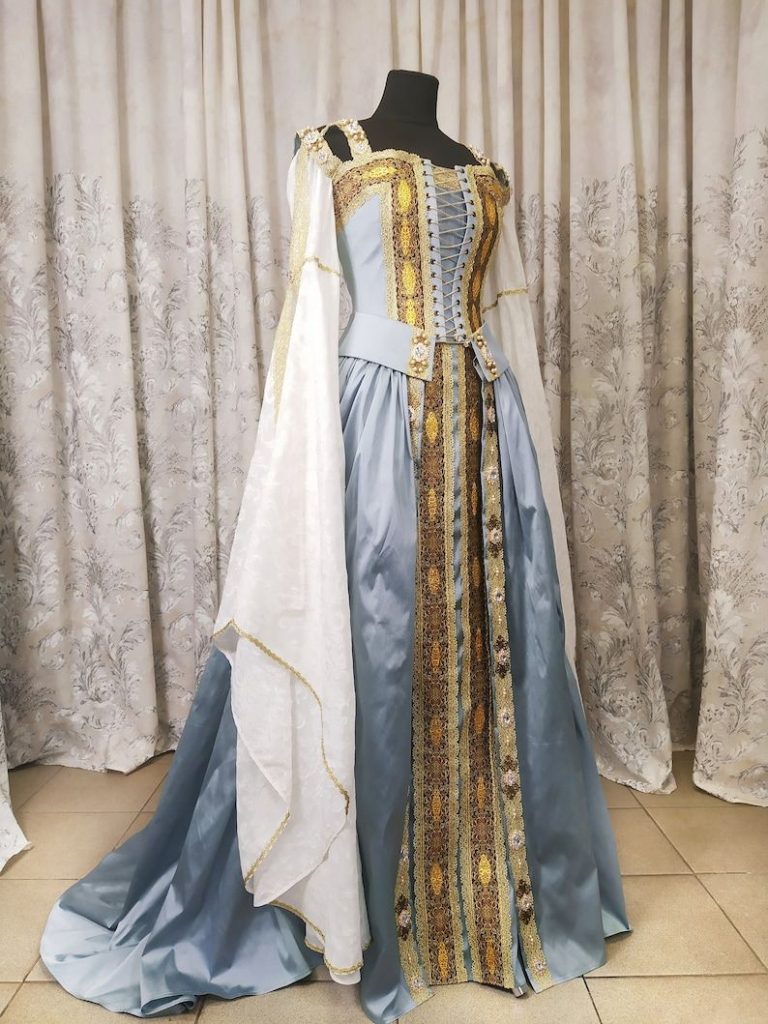Introduction:
The Renaissance period was known for its elaborate and ornate fashion styles, which included a range of different dress styles. During this period, dresses were made from luxurious fabrics and decorated with intricate embroidery, beading, and other embellishments.
In this essay, we will explore the different styles of Renaissance dresses, examining the design elements and cultural influences that shaped these dress styles.
Italian Renaissance style:
The Italian Renaissance style of dress was characterized by its elegance and refined simplicity. These dresses were made from luxurious fabrics such as silk and velvet and often had a fitted bodice and a full skirt. The neckline was often high and the sleeves were long and fitted. Italian Renaissance dresses were often decorated with intricate embroidery, beading, and other embellishments, although the overall effect was one of understated luxury. The Italian Renaissance style of dress was influenced by the classical art and culture of ancient Rome and Greece, which was experiencing a revival during this period.

French Renaissance style:
The French Renaissance style of dress was characterized by its ornate decorations and elaborate designs. These dresses were made from luxurious fabrics such as silk and velvet and often had a fitted bodice and a full skirt. The neckline was often low and the sleeves were long and puffed. French Renaissance dresses were often decorated with intricate embroidery, beading, and other embellishments, including lace, pearls, and gold thread. The French Renaissance style of dress was influenced by the extravagant and opulent tastes of the French court, which was known for its love of luxury and excess.
Spanish Renaissance style:
The Spanish Renaissance style of dress was characterized by its dramatic and bold designs. These dresses were made from luxurious fabrics such as silk and velvet and often had a fitted bodice and a full skirt. The neckline was often high and the sleeves were long and fitted. Spanish Renaissance dresses were often decorated with intricate embroidery, beading, and other embellishments, including metallic thread, sequins, and pearls. The Spanish Renaissance style of dress was influenced by the rich and colorful culture of Spain, which was known for its passion, drama, and flair.
English Renaissance style:
The English Renaissance style of dress was characterized by its simplicity and practicality. These dresses were made from sturdy fabrics such as wool and linen and often had a fitted bodice and a full skirt. The neckline was often high and the sleeves were long and fitted. English Renaissance dresses were often decorated with simple embroidery and other embellishments, although the overall effect was one of practicality rather than luxury. The English Renaissance style of dress was influenced by the practical needs of a growing middle class, who needed clothing that was both affordable and durable.
Conclusion:
The Renaissance period was known for its elaborate and ornate fashion styles, which included a range of different dress styles. Italian Renaissance dresses were characterized by their elegance and refined simplicity, while French Renaissance dresses were marked by their ornate decorations and elaborate designs. Spanish Renaissance dresses were dramatic and bold, while English Renaissance dresses were simple and practical. The different styles of Renaissance dresses were characterized by their unique design elements and cultural influences, reflecting the diversity and richness of the Renaissance era. Despite their differences, all Renaissance dresses shared a common commitment to luxury, refinement, and beauty.